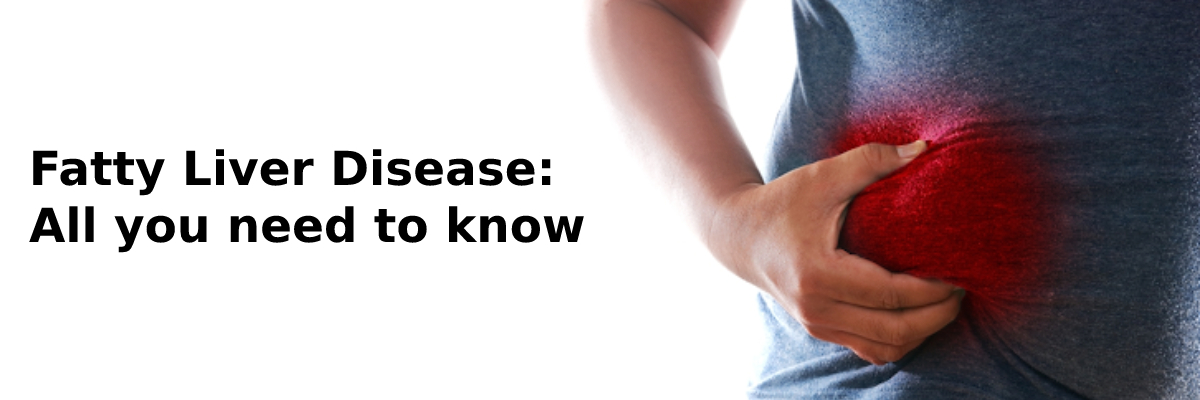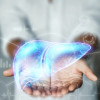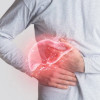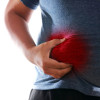
 Mrs. Mayuri Mathur
Mrs. Mayuri Mathur
Fatty Liver Disease: All you need to know
The normal adult human liver may constitute about 5% of its mass as a lipid. Fatty liver disease (FLD) is diagnosed when fat builds up in the liver. There are two main types of FLD:
Nonalcoholic fatty liver disease (NAFLD)
Alcoholic fatty liver disease also called alcoholic steatohepatitis
NAFLD is the fatty liver disease not associated with heavy alcohol use. It is rapidly evolving as the most common liver disease globally. This increase in the prevalence of the disease reflects the rising rates of obesity worldwide. Nonalcoholic fatty liver disease can be of two kinds-
Simple fatty liver in which there is fat in the liver but little or no inflammation; usually does not cause liver damage or complications.
Nonalcoholic steatohepatitis (NASH) includes inflammation, liver cell damage, and fat in the liver which can cause fibrosis, or scarring, of the liver. NASH may even lead to cirrhosis or liver cancer.
Alcoholic fatty liver disease occurs due to heavy alcohol use. The process of breaking down the alcohol can generate harmful substances, which have the potential to damage liver cells, promote inflammation, and weaken the body's natural defenses. The alcoholic fatty liver disease represents the earliest stage of alcohol-related liver disease, followed by alcoholic hepatitis and cirrhosis.
What are the symptoms of fatty liver disease?
Both NAFLD and alcoholic fatty liver disease are often considered silent diseases with few or no symptoms. Symptomatic individuals may feel tired or weary, have malaise, or have discomfort in the upper right side of the abdomen.
Who are at risk of fatty liver diseases?
The prime risk factors for NAFLD in everyday practice are obesity, type 2 diabetes mellitus (T2DM), hypertension, and dyslipidemia. These are over-represented in NAFLD populations, and in turn, NAFLD is markedly increased in individuals with one or more of these risk factors. T2DM and hypertension are further raised in people with more active disease and those with greater degrees of fibrosis in the liver.
The alcoholic fatty liver disease only occurs in heavy drinkers, especially those who have been drinking for a long time. The risk is higher for heavy drinkers who are women, have obesity, or have specific genetic mutations.
A fine line that differentiates NAFLD from Alcoholic FLD-
NAFLD is diagnosed when individuals consume less than 21 (3/day) and 14 units (2/day) of alcohol weekly over a 2-year timeframe for men and women, respectively. FLD patients drinking alcohol above the levels are deemed to have alcoholic FLD but may genuinely have a mixed disorder.
How is the fatty liver disease diagnosed?
Since the fatty liver is often asymptomatic, it is challenging to find fatty liver disease. It may be suspected in cases of abnormal liver test results for other reasons. Diagnosis of FLD requires-
Medical history
A physical examination
Various tests, including blood and imaging tests, and sometimes a biopsy
Suspicion of fatty liver disease is made in case of-
An enlarged liver
Signs of cirrhosis, like jaundice.
Next, the doctor may advise blood tests, including liver function tests and blood count tests. In some cases, other tests, like imaging tests, are also essential.
What are the consequences?
Both alcoholic FLD and a type of NAFLD(nonalcoholic steatohepatitis) can turn into cirrhosis, which is managed with medicines, operations, and other medical procedures. If cirrhosis leads to liver failure, a liver transplant may be necessary.
What are the treatments for fatty liver disease?
The primary requisite for NAFLD treatment is weight management, as weight loss can reduce fat in the liver, inflammation, and fibrosis. If the medicine might be the reason for NAFLD, the doctor might ask to stop or change the medication. However, till date, no medicine has been approved to treat NAFLD and the studies are still going on to investigate whether a particular diabetes medicine or Vitamin E can help treat the condition.
The most crucial part of treating alcohol-related fatty liver disease is to stop alcohol consumption. Help may be sort from a therapist or by participating in an alcohol recovery program.
Recommended lifestyle changes in patients with fatty liver disease
Consuming a healthy diet, limiting salt and sugar, while eating lots of fruits, vegetables, and whole grains
Getting regular exercise, which can help lose weight and reduce fat in the liver.
Consulting a doctor before using dietary supplements, like vitamins, or any complementary or alternative medicines or medical practices, as some herbal remedies may damage the liver.
Cessation from alcohol, a correct diagnosis in time, and some lifestyle modifications can help patients with FLD improve their quality of life and escape fatal consequences.
Getting vaccinated for the flu, hepatitis A and B, and pneumococcal disease. Hepatitis A or B, along with fatty liver, is more likely to cause liver failure and people with chronic liver disease are more prone to infections; thus the other two vaccinations are very necessary.

Mrs. Mayuri Mathur
Mrs. Mayuri Mathur is a Senior Medical Writer (Patient education and digital) and seasoned content creator with a rich tapestry of expertise spanning over ten years. With a diverse background in content creation, she brings a wealth of experience to the table, from crafting insightful medical articles to developing comprehensive patient education materials, dynamic press releases, and captivating brochures and website content. Throughout her illustrious career, she has demonstrated an exceptional knack for distilling complex medical concepts into easily understandable content, making her a trusted resource for both professionals and lay audiences alike. Her meticulous attention to detail and innate creativity have enabled her to deliver content that not only informs but also engages and inspires. Whether elucidating intricate medical procedures or crafting compelling marketing materials, her versatility and dedication shine through in every project she undertakes. Her passion for writing, coupled with her profound understanding, makes her an invaluable asset to any team or project. In a constantly evolving digital landscape, where effective communication is paramount, Mrs. Mayuri Mathur stands out as a beacon of excellence, consistently delivering top-notch content that resonates with audiences across diverse platforms.

.png)

.png)
.png)






Please login to comment on this article